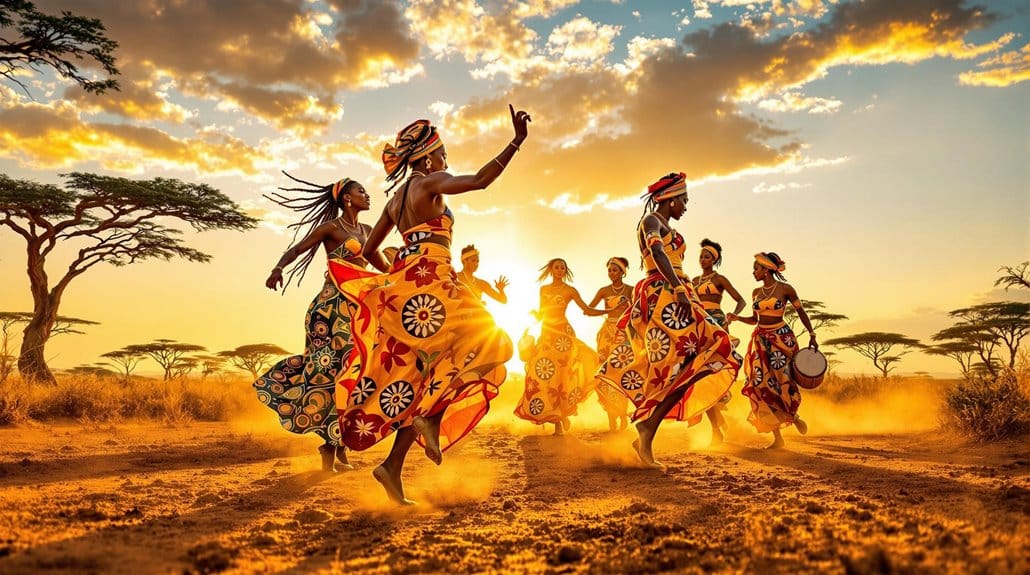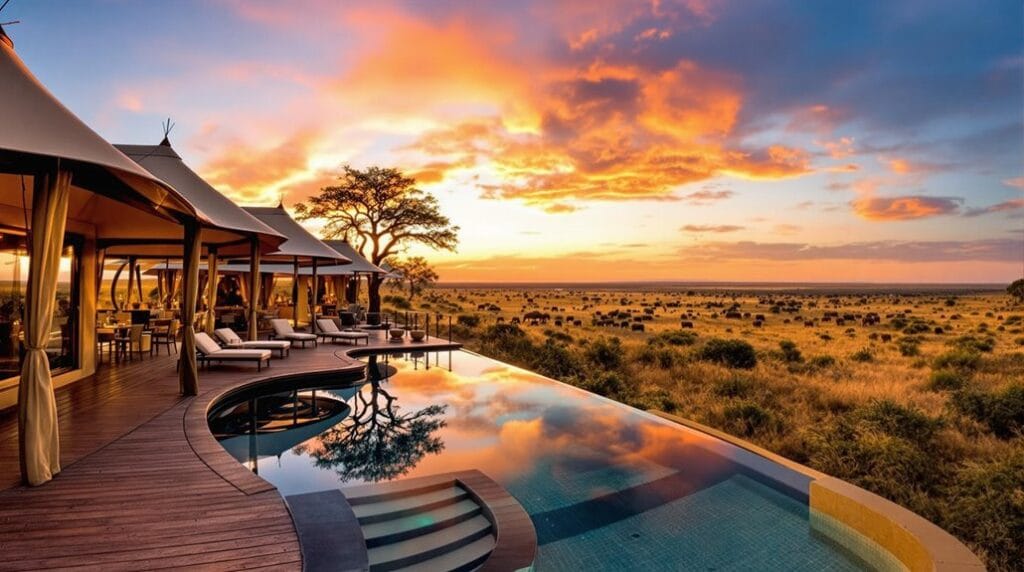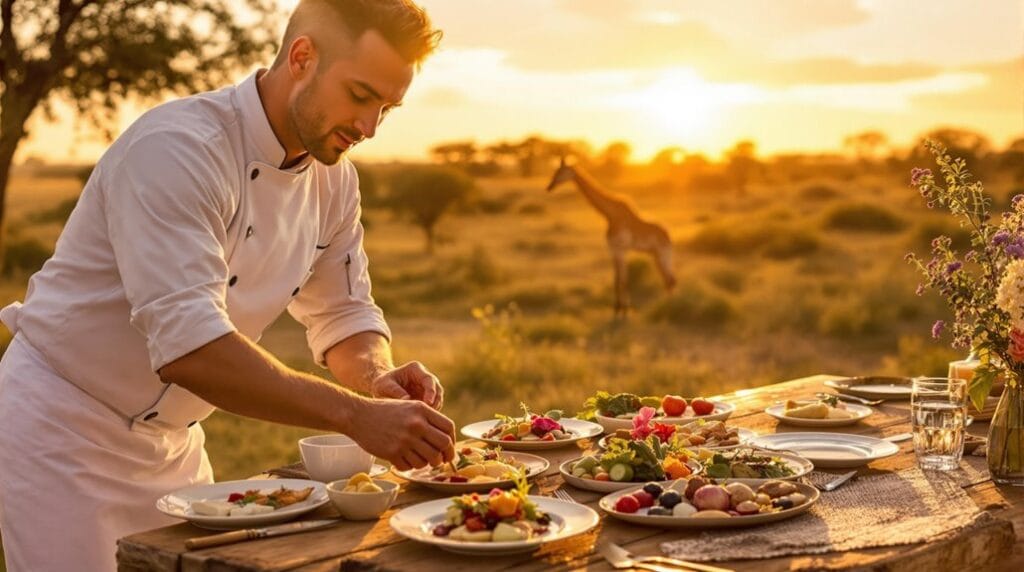Imagine witnessing the vibrant Adumu dance of the Maasai, where dancers leap high into the air, embodying the spirit of their ancestors. This unique expression not only captivates the eye but also tells a story rich in tradition and cultural identity. Engaging with Africa's diverse dance styles offers a window into the continent's complex history and community connections. But why should you take the time to explore these art forms further? The answer holds deeper implications for both personal growth and a broader appreciation of global cultures.
Key Takeaways
- African dance styles embody rich cultural narratives, preserving community identity and historical continuity through movement and rhythm.
- Each regional dance reflects unique characteristics, showcasing the diverse expressions of identity, belonging, and storytelling traditions across the continent.
- Participation in these dances fosters unity and communal bonds, reinforcing cultural values and ancestral connections within communities.
- Contemporary trends and global influences highlight the relevance of African dance, celebrating its vibrancy on international stages and social media platforms.
- Educational resources and performances provide insight into the intricate relationship between dance and drumming, enhancing appreciation for African cultural heritage.
Historical Roots of African Dance
At the heart of African dance lies a rich historical tapestry that reveals not just artistic expression, but also community identity and cultural resilience. You'll find that traditional African dance, deeply rooted in Sub-Saharan Africa, has evolved alongside rhythms and music that have remained largely unchanged across generations.
The three primary categories—religious, griotic (storytelling), and ceremonial—illustrate how dance is woven into the fabric of community rituals and celebrations.
However, the narrative of African dance isn't without its challenges. Colonialism and globalization have led to the blending or loss of some traditional styles, while the horrors of slavery sparked a transformative journey, facilitating the spread of African dance within the African diaspora.
Styles like Calenda and Cakewalk emerged as vibrant adaptations, showcasing the fluidity and resilience of African dance amidst cultural intersections.
Today, when you explore modern African-American and Brazilian dance, you can trace their movements back to these traditional roots. It's a reflection of the enduring legacy of African dance, reminding you of its historical significance and the deep connections that bind communities across continents.
Cultural Significance of Dance
In African societies, dance isn't just an art form; it's an essential thread that weaves community connections and cultural identity.
You'll notice how traditional movements often tell stories and preserve histories, enriching the understanding of heritage among younger generations.
Furthermore, these dances serve as a spiritual conduit, strengthening bonds within the community as they communicate with ancestors and celebrate life's changes.
Community Connection Through Dance
Dance serves as a powerful medium for community connection in Africa, where its cultural significance transcends mere entertainment. African dances embody collective expression, emphasizing shared experiences that foster social bonds and reinforce cultural identity. When you participate, you engage in a ritual that connects you to your heritage and community.
| Aspect | Description |
|---|---|
| Collective Expression | Dance emphasizes unity over individualism. |
| Cultural Heritage | Dances are taught to children, preserving values. |
| Social Structures | Gender roles in dance reflect community beliefs. |
| Ritual Significance | Dances play essential roles in celebrations and rites. |
As you join in these vibrant movements, you're not just performing; you're actively participating in a lineage that echoes through generations. The rhythmic beats of drums and vocal chants create an atmosphere that unites everyone, enhancing the feeling of belonging. Each step you take deepens your connection to the community, reinforcing the rich tapestry of cultural identity that defines African societies. In this way, dance becomes a fundamental thread in the fabric of community life, binding you to others through shared joy and expression.
Storytelling and Cultural Preservation
Storytelling through movement holds a prominent place in African dance, serving not just as entertainment but as an essential means of preserving cultural narratives. This storytelling aspect is essential for maintaining community values and identity across generations.
Here's how African dance styles contribute to cultural preservation:
- Historical Reflection: Each dance often recounts significant life events and rituals, ensuring that history remains alive within the community. For instance, the Agbekor warrior dance vividly narrates historical events, embedding moral lessons into its movements.
- Holistic Expression: The integration of music, rhythm, and dance creates a rich tapestry of cultural heritage. This connection allows communities to engage with their ancestors, fostering a sense of belonging and continuity.
- Cultural Education: From birth, children learn these dances, actively participating in their cultural education. This practice cultivates an appreciation for their history and identity, reinforcing the values that define them.
Through these elements, African dance not only entertains but serves as a significant conduit for storytelling and cultural preservation, intertwining the past with the present in a vibrant, communal expression of identity.
Spiritual Expression and Identity
While many forms of artistic expression exist, African dance uniquely embodies spiritual significance, allowing communities to forge deep connections with their cultural beliefs and ancestral spirits. This dance serves as a crucial medium for spiritual expression, where movements become rituals, honoring the values and traditions that define each community's identity.
Each dance style reflects specific cultural narratives, revealing the history and collective identity of the people. In many African cultures, dance is interwoven with religious practices, symbolizing joy, celebration, and worship. These movements resonate with biblical references that underscore dance's role in spiritual contexts.
Through dance, you can communicate emotions and changes, fostering communal expressions of joy, sorrow, and healing. This reinforces social bonds, creating a sense of belonging within the community.
Moreover, the rhythmic movements of African dance are inseparable from musical traditions, together creating a rich tapestry of cultural identity and spiritual connection. As you engage with these dance styles, you're not just witnessing art; you're participating in a profound expression of cultural identity that resonates deeply with the community's spiritual essence.
Embracing African dance invites you to explore your own connections to culture and spirituality.
Regional Dance Styles Overview
The rich tapestry of Africa's dance styles reveals a profound connection between movement and cultural identity. Each region showcases its own unique style, reflecting the customs and narratives that bind communities together.
Let's explore some of these regional dance styles:
- Southern Africa: Here, the Indlamu dance from the Nguni people embodies warrior culture, featuring rhythmic stamping that celebrates communal strength.
- Western Africa: The Agbekor dance, practiced by the Fon and Ewe peoples, mimics battlefield tactics, illustrating the valor and historical victories of their ancestors.
- Eastern Africa: The Adumu, or Maasai jumping dance, is performed during coming-of-age ceremonies, highlighting the community's cultural values and physical prowess.
These African dances aren't just performances; they serve as essential expressions of identity and belonging.
By exploring these regional dance styles, you gain insight into the intricate connections between movement and the stories that shape each culture.
Participating in or witnessing these dances allows you to engage with the deep-rooted traditions that continue to thrive across the continent, fostering a sense of unity and appreciation for diversity.
Notable Dances From Eastern Africa
When you examine notable dances from Eastern Africa, you'll find that each movement tells a story deeply rooted in cultural significance.
The Adumu's rhythmic jumps not only celebrate coming-of-age but also embody the spirit of the Maasai community.
Similarly, the dynamic movements of Indlamu and the ritualistic essence of Jerusarema highlight the rich traditions and values of their respective cultures.
Cultural Significance of Adumu
At the heart of Maasai culture, the Adumu dance embodies not just a form of artistic expression but also a profound cultural significance. This traditional dance plays a crucial role in fostering community values and reinforcing the identity of the Maasai people.
When you witness the Adumu, you'll notice three key elements that highlight its importance:
- Celebration of Adulthood: The dance marks the coming-of-age ceremonies for young warriors, symbolizing their change into adulthood and responsibility.
- Physical Prowess: As dancers leap high into the air, they showcase not only their agility but also their bravery, reflecting the strength that the Maasai value in their culture.
- Unity Through Music: Accompanied by traditional Maasai music, the rhythmic chants and clapping create a communal atmosphere, drawing everyone into the experience.
Through the Adumu, the Maasai preserve their rich cultural heritage, ensuring that younger generations understand their roots.
Participating in or witnessing this traditional dance allows you to connect with the Maasai's unique identity, fostering a sense of belonging and appreciation for their vibrant community values.
Unique Movements in Indlamu
Indlamu captivates audiences with its dynamic and vigorous movements, showcasing the rich cultural tapestry of the Nguni people from Southern Africa. As you watch, you'll notice the unique movements that define this traditional dance, particularly the rhythmic stamping that resonates deeply with the spirit of warrior culture. Each stomp echoes a celebration of strength, unity, and identity, inviting you to feel a connection to the community.
Performers often don traditional attire, adorned with animal skins and intricate beadwork, enhancing the visual storytelling of Indlamu. This attire not only adds to the aesthetic but also signifies the dancers' cultural heritage, creating a sense of belonging as they honor their ancestors.
The synchronized group formations emphasize collective expression, with intricate footwork that captures your attention and creates a powerful visual rhythm. Accompanied by the driving beat of drums, the movements become even more compelling, guiding the dancers and enveloping the audience in an energetic atmosphere.
Indlamu isn't just a dance; it's a vibrant expression of community and cultural pride that invites you to join in the celebration of life and heritage.
Ritualistic Aspects of Jerusarema
Jerusarema, a vibrant embodiment of Shona culture, serves as a powerful ritualistic expression deeply woven into the fabric of community life in Zimbabwe. Engaging in this dance allows you to experience the essence of African traditions while participating in communal bonding.
The ritualistic aspects of Jerusarema can be understood through three key elements:
- Community Participation: The dance thrives on the active involvement of spectators, where call-and-response interactions create a shared experience, fostering unity and belonging.
- Honoring Ancestors: Typically performed to celebrate significant life milestones or honor ancestors, Jerusarema reinforces spiritual connections within the community, highlighting the importance of heritage.
- Cultural Storytelling: With its intricate body movements and energetic footwork, the dance reflects the storytelling traditions of the Shona, allowing you to witness the rich narratives embedded in African culture.
In contemporary settings, Jerusarema has adapted, showcasing its relevance in the evolving landscape of performance art.
Vibrant Dances of Southern Africa
Southern Africa boasts a rich tapestry of dance styles that reflect the region's diverse cultural heritage and communal values. These vibrant movements, such as Indlamu, embody the warrior spirit of the Nguni people through rhythmic footwork that energizes participants and spectators alike.
The Jerusarema dance from Zimbabwe showcases strength and agility, often performed during celebrations, reminding you of the physical prowess inherent in African culture.
Mohobelo, the striding dance of the Sotho people, weaves graceful movements into significant social gatherings, emphasizing connection and tradition.
Meanwhile, Umteyo captivates with its high-energy shaking, fostering social cohesion and unity in communal settings. Each of these dance styles serves as an integral part of South African identity, preserving history and social values that resonate deeply within the community.
As you explore these dynamic expressions, you can't help but feel a sense of belonging, as they invite you to partake in a shared cultural narrative.
Southern Africa's dances not only entertain but also enrich your understanding of the region's vibrant cultural landscape, uniting people through rhythm and movement.
Unique Expressions From Western Africa
Dance in Western Africa embodies a vibrant celebration of community and cultural identity, showcasing unique expressions that resonate deeply with their histories and social values. The diverse dance forms found in this region not only entertain but also serve as essential links to the past and present of African societies.
Consider these key styles:
- Agahu: A circle dance from the Egun speakers in Benin, it predates WWII and emphasizes communal joy and togetherness.
- Agbekor: Originating from the Fon and Ewe peoples, this warrior dance uses horsetail props to narrate historical events and battlefield tactics.
- Kpanlogo: Emerging from Ghana in the 1940s, this free-flowing dance reflects the lively rhythms of highlife music, fostering a sense of social connection.
Each of these unique expressions highlights the resilience and creativity of West African cultures. Through dance, you engage with the stories and values that define these communities, offering you a deeper understanding of their collective identity.
Embracing these traditions allows you to feel a sense of belonging within the rich tapestry of African heritage.
Contemporary Afro-Dance Trends
In the vibrant landscape of contemporary dance, Afro-dance trends are emerging as a dynamic force that resonates with audiences worldwide. Styles like kwassa kwassa, azonto, and pantsula are not just movements; they're cultural expressions that celebrate African heritage. With the rise of social media, these contemporary Afro-dance forms have transcended borders, creating a global community.
High-profile performances, like Rihanna's Gwara Gwara at the Grammys, showcase the power of these dances, while BTS's "IDOL" blends African and Korean influences, further solidifying Afro-dance's place in modern dance.
Here's a look at how these trends connect communities and cultures:
| Dance Style | African Country | Global Influence |
|---|---|---|
| Kwassa Kwassa | Democratic Republic of Congo | Featured in global music videos |
| Azonto | Ghana | Viral dance challenges on social media |
| Pantsula | South Africa | Highlighted in international competitions |
| Afro Fusion | Namibia/Zambia | Innovative blends of traditional and modern techniques |
| Gwara Gwara | South Africa | Gaining recognition in popular culture |
As you engage with these vibrant forms, you'll find a sense of belonging, celebrating the rich tapestry of African dance on a global stage.
Resources for Further Exploration
Exploring the vibrant world of contemporary Afro-dance opens doors to a wealth of resources that deepen your understanding of these dynamic styles. By engaging with these materials, you not only enrich your dance practice but also connect with the cultural narratives behind each movement.
Here are three valuable resources to reflect on:
1. Books: Immerse yourself in "African Dance" by Kariamu Welsh-Asante for a detailed overview of various African dance forms.
Also, "A Life for the Djembe" by Mamady Keïta explores the intricate link between dance and drumming.
2. Online Platforms: Websites dedicated to specific dance forms like Agbekor and Kpanlogo offer instructional videos and cultural insights, making it easy for you to learn and appreciate these styles.
3. Events and Festivals: Participate in gatherings such as the Red Bull Dance Your Style event or Afro dance movements in Brooklyn.
These celebrations showcase contemporary interpretations and provide a welcoming space for learners.
Utilizing these resources will enhance your appreciation for African dance, its historical lineage, and its profound influence on African American styles.
Embrace this journey, and feel the rhythm of connection!
Frequently Asked Questions
What Makes African Dance Unique?
African dance stands out due to its intricate rhythm expression and rich cultural storytelling.
You'll notice how each movement connects you to the community, fostering a deep sense of belonging.
The dances often carry spiritual significance, linking participants to their ancestors and cultural heritage.
As you engage with these unique styles, you'll appreciate the layered rhythms and the powerful narratives that emerge, highlighting the importance of connection and tradition within diverse African cultures.
Why Is Dance Important to Traditional African Cultures?
Dance is essential to traditional African cultures because it serves as a powerful storytelling medium, conveying history and values through movement.
You'll find that it fosters community bonding, as group participation encourages connection and belonging among members.
Additionally, dance creates a spiritual connection, allowing individuals to interact with ancestral spirits and the divine.
Engaging in these practices not only preserves cultural expression but also strengthens social ties and reinforces identity within the community.
What Was an Important Purpose of African Dance?
An important purpose of African dance lies in its ritual significance, where you engage in storytelling elements that connect you to your community's history.
It fosters community bonding, inviting participation from all, and reinforcing shared identities.
Through these vibrant movements, you experience spiritual expression, allowing you to connect with your ancestors and cultural heritage.
Embracing this dance form not only preserves traditions but also cultivates a sense of belonging within your community.
How Has African Dance Influenced American Culture?
You might think African dance's impact on American culture is minimal, but it's profound.
African rhythms have woven seamlessly into our music and dance education, creating a rich cultural fusion. Through community expression, styles like jazz and hip-hop reflect this influence, celebrating diversity.
As you engage with these vibrant movements, you'll discover the deep connections that bind us all, fostering a sense of belonging and appreciation for our shared heritage.
Conclusion
Exploring Africa's unique dance styles not only deepens your connection to the continent's rich heritage but also highlights the vibrant diversity within its cultures. Did you know that over 1,500 distinct ethnic groups contribute to the continent's dance traditions? This staggering variety showcases the profound role dance plays in storytelling and community building. By engaging with these art forms, you foster appreciation for cultural differences and spark creativity in your own artistic endeavors.








